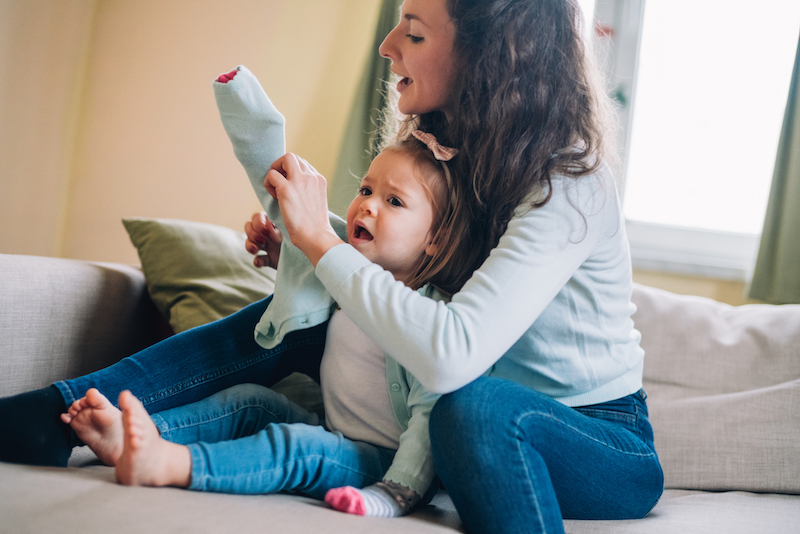
Photo: Getty Images
So many things have changed – and continue to change – for you and your family during this time. Breathe. And remember you are not alone! With so much going on, it is likely our children are having increased tantrums, crying, wanting or requiring more attention, ignoring instructions and letting you know they want some control. These behaviors are expected under these circumstances and you are managing them the best way you can. To partner with you on this journey, here are some helpful tips to keep in mind.
Structure/routine: We are all missing our daily routines that are impacted by social isolation. Daycare closures, parents working from home and lack of activities outside the home all contribute to the challenges. Toddlers and preschoolers have difficulty with transitions, so providing a routine during this time can be particularly helpful. A set routine might be impossible (and that’s okay!), but try to have a few planned daily tasks your child can expect. Some ideas include an outdoor activity, specific meal/snack times, tablet time, or even a family activity of the day (while respecting social distancing).
Shine the spotlight by increasing positive attention: Children behave in many ways in order to gain attention from others. Sometimes, they might whine, complain, and tantrum even though they are wonderful helpers and good listeners at other times. Providing lots of positive attention is one of the most powerful ways to let your child know you enjoy when he/she behaves well.
Praising children when they do things we like is also an important way to help children feel good about themselves. Praise sends a powerful message to children, so it is essential that you saw something specific like, “Great job helping mommy,” or “I love that you’re playing so quietly,” or “Thank you for sharing with your sister.” Your child will need to hear these words often in order to know you’re attending to them and specific praise should include non-verbal communication too (hugs, hi-fives, fist bumps, back rubs). Remember to praise frequently!
Remove the spotlight to decrease displeasing behavior: When children do not get enough positive attention for behaving in an obedient, pleasing way, they learn that the best way to get attention is to behave in a disobedient, displeasing way. They may also behave in these ways when they are upset, stressed or just not getting their way. This means we may have to manage more annoying, obnoxious behavior (interrupting, yelling, and arguing) during the day.
When parents respond to displeasing behavior with a brief period of ignoring instead of providing attention, they signal to children that they must behave appropriately in order to get attention. It is important to remove both verbal and non-verbal attention. Remember to return your bright spotlight with lots of praise as soon as your child is back to engaging in an appropriate behavior!
While so much has changed for your family, your attention is still the most valuable thing to your child.
Be strategic with your attention so your child can hear your message about which behaviors make them shine!

